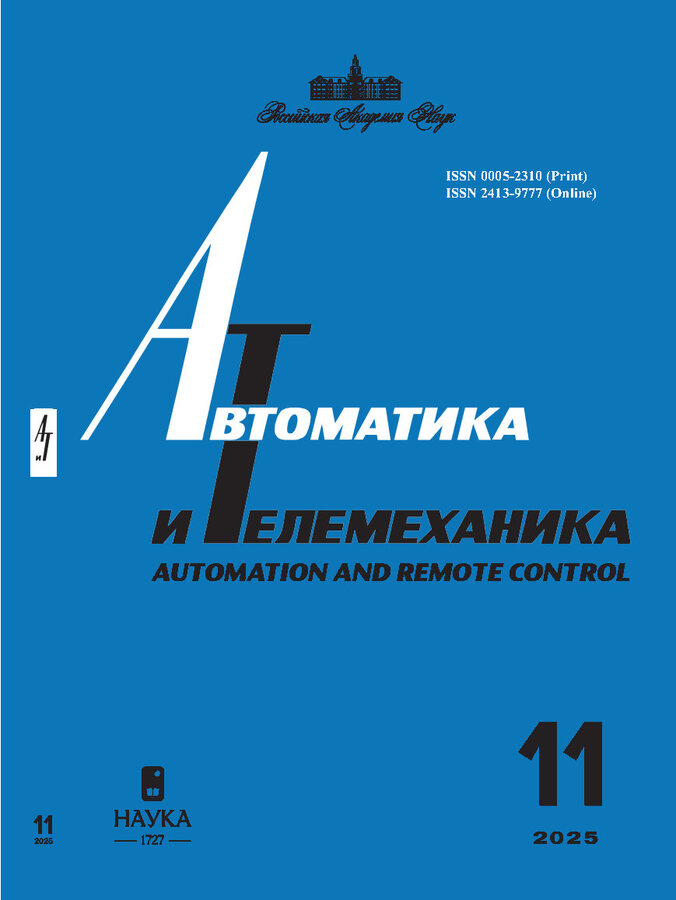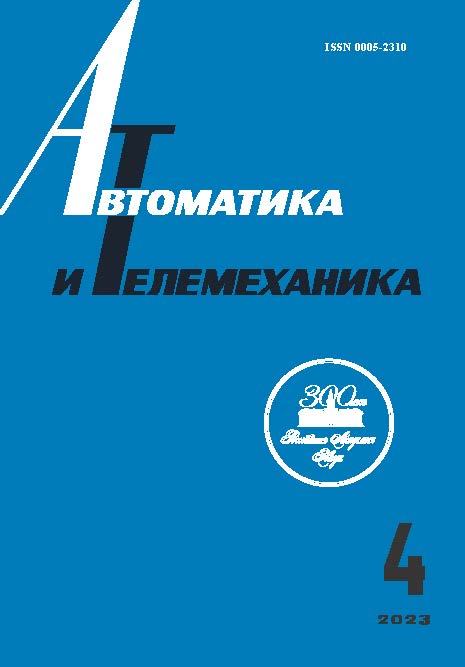Optimizatsiya vysotno-skorostnogo profilya kreyserskogo poleta vozdushnogo sudna v real'noy atmosfere
- Authors: Aleksandrov V.A1, Zybin E.Y.2, Kos'yanchuk V.V2, Sel'vesyuk N.I2, Stefanyuk E.A1,3, Tremba A.A1,3, Khlebnikov M.V1,3
-
Affiliations:
- Trapeznikov Institute of Control Sciences, Russian Academy of Sciences
- State Research Institute of Aviation Systems
- Moscow Institute of Physics and Technology (National Research University)
- Issue: No 4 (2023)
- Pages: 3-18
- Section: Nonlinear systems
- URL: https://journals.rcsi.science/0005-2310/article/view/144269
- DOI: https://doi.org/10.31857/S0005231023040013
- EDN: https://elibrary.ru/QHPVML
- ID: 144269
Cite item
Full Text
Abstract
This paper considers subsonic turbojet aircraft fuel consumption minimization problem during cruise phase, assuming fixed time of arrival. The problem takes into account real atmosphere data. We utilize tailwind/headwind component values at various flight levels, as well as air temperatures and atmospheric pressures at various altitudes. The solution to the altitude and speed flight profile optimization problem is through constrained coordinate descent method. The paper considers optimizing the fuel consumption of a medium-haul aircraft during the cruise phase using sample data set on temperature, pressure, and wind speed. The proposed approach achieves a decrease in fuel consumption of 1.2% when optimizing with regard to real atmosphere.
About the authors
V. A Aleksandrov
Trapeznikov Institute of Control Sciences, Russian Academy of Sciences
Email: va.alexandrov@yandex.ru
Moscow, Russia
E. Yu Zybin
State Research Institute of Aviation Systems
Email: zybin@mail.ru
Moscow, Russia
V. V Kos'yanchuk
State Research Institute of Aviation Systems
Email: kos.vl.v@gmail.com
Moscow, Russia
N. I Sel'vesyuk
State Research Institute of Aviation Systems
Email: nis@gosniias.ru
Moscow, Russia
E. A Stefanyuk
Trapeznikov Institute of Control Sciences, Russian Academy of Sciences; Moscow Institute of Physics and Technology (National Research University)
Email: stefa@ipu.ru
Moscow, Russia; Dolgoprudny, Russia
A. A Tremba
Trapeznikov Institute of Control Sciences, Russian Academy of Sciences; Moscow Institute of Physics and Technology (National Research University)
Email: atremba@ipu.ru
Moscow, Russia; Dolgoprudny, Russia
M. V Khlebnikov
Trapeznikov Institute of Control Sciences, Russian Academy of Sciences; Moscow Institute of Physics and Technology (National Research University)
Author for correspondence.
Email: khlebnik@ipu.ru
Moscow, Russia; Dolgoprudny, Russia
References
- Александров В.А., Зыбин Е.Ю., Косьянчук В.В., Сельвесюк Н.И., Тремба А.А., Хлебников М.В. Оптимизация высотно-скоростного профиля крейсерского полета воздушного судна при фиксированном времени прибытия // АиТ. 2021. № 7. С. 69-85.
- Губарева Е.А., Мозжорина Т.Ю. Оптимизация программы полета дозвукового пассажирского самолета на участке крейсерского полета // Инженерный журнал: наука и инновации. 2014. Вып. 12(36).
- Голубева А.А., Григоров П.Ю., Куланов Н.В. Современная методология решения задачи вертикальной навигации самолетов гражданской и военно-транспортной авиации // XII мультиконференция по проблемам управления (МКПУ-2019). 2019. С. 32-35.
- Сагалаков А.Э., Филатьев А.С. К оптимизации траекторий летательных аппаратов в реальной атмосфере // Ученые записки ЦАГИ. 2019. Т. 50. № 4. С. 31-52.
- Saucier A., Maazoun W., Soumis F. Optimal speed-profile determination for aircraft trajectories // Aerosp. Sci. Technol. 2017. V. 67. P. 327-342.
- Franco A., Rivas D. Optimization of Multiphase Aircraft Trajectories Using Hybrid Optimal Control // Journal of Guidance, Control, and Dynamics. 2015. Vol. 38. No. 3. P. 452-467.
- Valenzuela A., Rivas D. Analysis of along-track variable wind effects on optimal aircraft trajectory generation // Journal of Guidance, Control, and Dynamics. 2016. Vol. 39. No. 9. P. 2148-2155.
- Мозжорина Т.Ю., Губарева Е.А. Моделирование влияния атмосферных условий на результаты оптимизации программы полета дозвукового пассажирского самолета // Математическое моделирование и численные методы. 2014. № 3. С. 74-88.
- Dancila R.I., Botez R.M. New atmospheric data model for constant altitude accelerated flight performance prediction calculations and flight trajectory optimization algorithms // Proc. of the Institution of Mechanical Engineers, Part G: Journal of Aerospace Engineering. 2021. 235(4). P. 405-426.
- Takeichi N. Adaptive prediction of flight time uncertainty for ground-based 4D trajectory management // Transportation Research Part C: Emerging Technologies. 2018. Vol. 95. P. 335-345.
- Bartel M., Young T.M. Simplified Thrust and Fuel Consumption Models for Modern Two-Shaft Turbofan Engines // Journal of Aircraft. 2008. No. 45(4). P. 1450-1456.
- Григоров П.Ю., Куланов Н.В. Применение концепции обратных задач динамики в задачах вертикальной навигации // Известия РАН. Теория и системы управления. 2016. № 3. С. 130-140.
- Hull D.G. Fundamentals of Airplane Flight Mechanics. Berlin Heidelberg: Springer-Verlag, 2007.
- Поляк Б.Т. Введение в оптимизацию. 2-е издание, исправленное и дополненное. М.: ЛЕНАНД, 2014.
- ГОСТ 4401-81. Атмосфера стандартная. Параметры. М.: Изд-во стандартов, 2004.
Supplementary files










